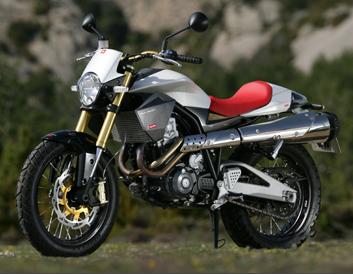I just read an amazing recount of a motorcycle accident by Sylvia Stuurman and her subsequent path to recovery. The reconstruction of the accident and thoughts about managing risk are interesting.
She also has some great insights on motorcycle touring and engineering. She makes a good case for the Derbi Mulhacen. Would she have migrated from a giant “adventure” 1200 BMW to this smaller, more nimble, bike if not for the accident?
 For what it is worth, the Mulhacen is said to be the largest bike ever made in Spain, but it’s incredibly small compared to the latest American and German designs.
For what it is worth, the Mulhacen is said to be the largest bike ever made in Spain, but it’s incredibly small compared to the latest American and German designs.
Does anyone really think 1600cc is a safe or reasonable platform for two wheels? Even 1200 seems out of proportion to me. I couldn’t help but notice the Mulhacen was designed by a German engineer, Klaus Nennewitz, who also helped Aprilia make the Tuono, and the engine is a Yamaha design. Derbi is a subsidiary of Piaggio, the famous scooter company. This new take on the 1970s scrambler concept is probably far too sensible (it’s a long long way from the current fad of chrome-covered American garage queens and show boats) to be shipped to the US market for some time.
The only thing I’d change is to make it a diesel-hybrid instead of yet another gasoline bike. But I guess that would be changing a lot, eh?